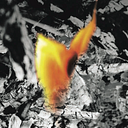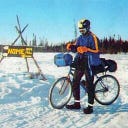Go with the Wind
In the Tamahumara and Omugí Tradition
The winds of our breath inspire as we pass stories from one generation to the next.
In India, there is a group devoted to barefoot endurance running. Barefoot running is best done on dry sand. Their movements mimic how children naturally run, in a way that makes the whole body move as it was designed. Shoes are a support that inhibit your natural strength and form. Even those that race in shoes are encouraged to train barefoot to develop the best form.
In South America, Inka runners and their predecessors ran 150 miles per day to carry messages between far flung communities. They ran over mountains on stairstep like roads where no wheel would be usuable. They ran at high altitudes in dry air; an environment that permanently, biologically honed for endurance athletics.
Further north, the Omugí, the indigenous women of the high plains and mountains of Mexico — where corn and the milpa was first developed, run over 100 miles a day. Sometimes they run 200 miles in 48 hours, much like their men, called Tamahumara. They run to hunt, to carry messages, for sport. They run barefoot or in sandals.
Yet further north, Tarzan Brown (Ellison Myers Brown Sr.) won the Boston Marathon twice. Too far north for dry sand, he wore shoes in the marathon pictured, but he liked to train and race barefoot. Glass bottle chards on the road form an obstacle to barefoot running today.
Today the tradition of endurance athletics is carried forward by people like Sherenté Harris, a Narragansett in our day championing the Let’s Move campaign as part of the Gen-I initiative.
One theory is that peoples whose ancestors evolve in warm dry places, where persistence hunting causes prey to overheat, developed the slow twitch muscles inherent in an endurance athlete. Cold environment peoples are more likely to be sprinters.
Possibly, the Narragansett endurance talent is a sign of their southwestern roots. The children of Canonicus came from the south and west, just as their oral history told. Of course the peoples mixed along the way north, and in the north, and then later with European stock. However, there is a persistent set of traits that can endure, especially when revered.
Barefoot running forces the impact to the balls of their feet, a much less stressful form of running more akin to cycling in its force distribution in the leg. I like to think of them as more akin to endurance cyclists than to modern day runners. Concrete running in support shoes changes the architecture of stride. I can’t run heel first without injury for long, but my body is made for barefoot endurance, and that translates to cycling. I like to think my own and my sibling’s endurance comes from the tiny fraction of my mother and my father’ s heritage — remixed and re-emergent — that came from the south and west. It is little more than legend in our oral history, but it keeps me pedaling, energy from the wind.

